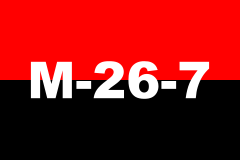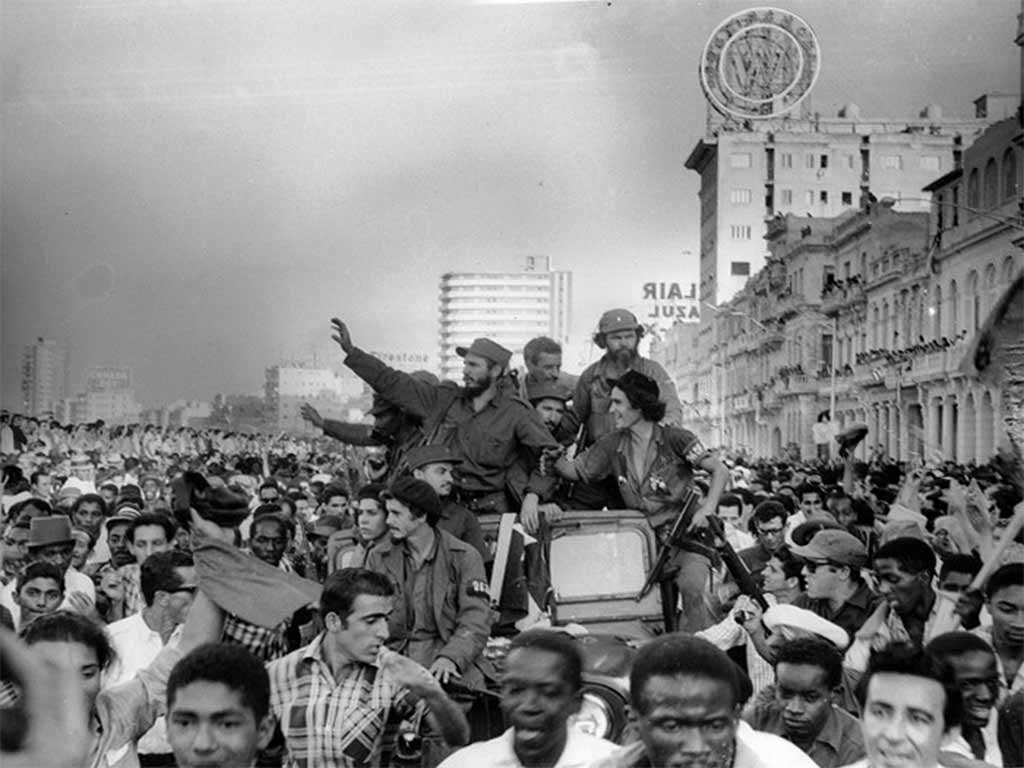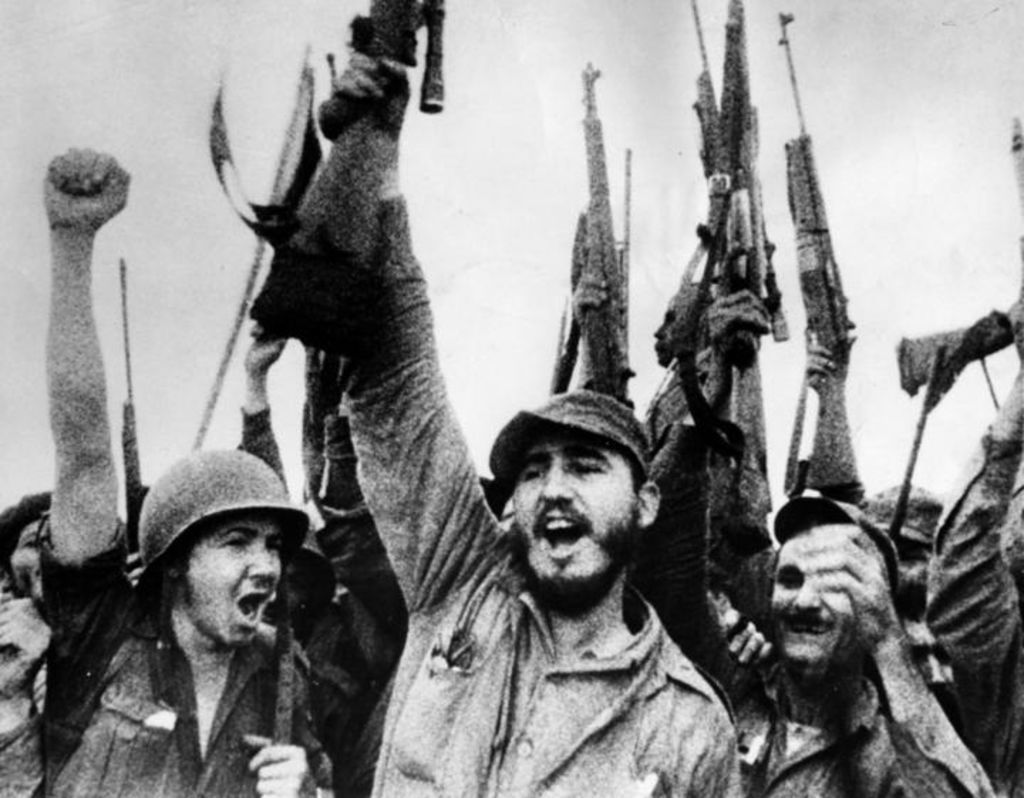26th of July Movement Movimiento 26 de julio | |
|---|---|
 | |
| Founded | December 1955 |
| Political orientation | Vanguardism Left-wing populism Anti-imperialism Anti-colonialism |
The 26th of July Movement (M-26-7) was a Cuban vanguard revolutionary organization (and later, a political party) led by Fidel Castro. It led the Cuban Revolution, which overthrew the Statesian-backed military dictator Fulgencio Batista. In March 1962, it merged with the Integrated Revolutionary Organization (ORI), the Popular Socialist Party (PSP), and parts of the Revolutionary Directorate to become the United Party of the Cuban Socialist Revolution (PURSC), later the Communist Party of Cuba (PCC) in 1965.

Although the movement was not explicitly Marxist in nature, its organization was largely dominated by Marxist–Leninists such as Ernesto "Che" Guevara and Raúl Castro. Thus, many Maxists consider the Cuban Revolution to be a national liberation movement moreso than a socialist revolution. After the success of the revolution, Fidel Castro, partially inspired by Che and Raúl, as well as having been forced to trade with the Soviet Union following an embargo imposed by the United States, realized that only socialism was the path forward for Cuba and in December 1961, Castro revealed that he was a Marxist–Leninist.
History
On 26 July 1953, Fidel Castro, a young lawyer, launched a failed attack on the Moncada Barracks in an attempt to depose the reactionary and fascist right-wing dictatorship of Fulgencio Batista, who was backed financially by the United States. The attack failed and Castro was sentenced to 15 years in prison. He was freed in 1955 after a political campaign on his behalf, and he fled to Mexico along with his brother Raúl and several other revolutionaries. In Mexico, Fidel and Raúl met Che Guevara, who agreed to help them depose Batista. This was the start of the 26th of July Movement (M-26-7).
On 2 December 1956, Castro and 81 other men landed in Cuba, having sailed on the Granma from Tuxpan, ready to organize a revolution to overthrow Batista. The early signs were disastrous for the movement. They landed in broad daylight, were attacked by the Cuban Air Force, and suffered numerous casualties. The landing party was split into two and wandered lost for two days, with most of their supplies abandoned where they landed. They were also betrayed by their peasant guide in an ambush, which killed more of those who had landed. Of the 82 who sailed aboard the Granma, only 22 eventually regrouped in the Sierra Maestra.
The M-26-7 divided its operations between the rural guerrillas, who were based in the Sierra Maestra, and the urban underground, which consisted mostly of middle-class and professional Cubans living in towns and cities. Castro focused his efforts in the rural countryside on fighting Batista's soldiers and liberating and governing increasing amounts of territory taken from Batista's control. The M-26-7 incorporated large numbers of peasant men and women into the ranks of the M-26-7 where they served as soldiers, collaborators, and informants to fight Batista's regime. Many peasant leaders were also affiliated with the Popular Socialist Party and used their connections to recruit support for the M-26-7. Most notably, the Campesino Association, which had been an active communist organization since 1934, allowed the M-26-7 to access and build on the network of peasant political organizing. The leaders of the Authentic Party (PA) and Orthodox Party and their constituents of small, medium, and wealthy landowners supported M-26-7 as well through funding and protection from Batista's forces, although Castro's platform of agrarian reform would lead to the eventual break between wealthy farmers and landowners and M-26-7.

Anti-Batistas, liberals, urban workers, peasants, and leftists became the dominant followers of the M-26-7 movement, which gained control over Cuba. Cuba modeled itself after the Eastern European nations that made up the Warsaw Pact, becoming the first socialist government in the Western Hemisphere. Once it was learned that Cuba would adopt a strict Marxist–Leninist political and economic system, opposition was raised not only by dissident party members, but by the United States as well. Fidel Castro's government seized private land, nationalized hundreds of private corporations and taxed American products so heavily that U.S. exports were cut in half in just two years. The Eisenhower Administration then imposed trade restrictions on everything except food and medicine. As a result, Cuba turned to the Soviet Union for trade instead. The US responded by cutting all diplomatic ties to Cuba.
In April 1961, a CIA-trained force of Cuban exiles and dissidents launched the unsuccessful Bay of Pigs invasion against Cuba, shortly after Castro had declared the revolution to be socialist in nature. In December of that year, Castro formally proclaimed himself a communist.